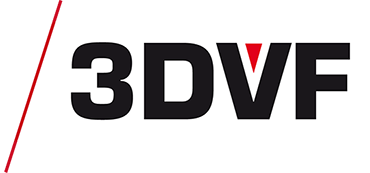This article is also available in:
French
A kinkajou, a lost love and a musical adventure from Havana to Miami: this is the pitch of Vivo, Sony’s latest animated feature film. The movie is directed by Kirk DeMicco (The Croods) and co-directed by Brandon Jeffords (Cloudy with a Chance of Meatballs 2). The film is streaming on Netflix.
We had the chance to ask Senior Animator Milian Topsy a few questions about the making of the film: he gave us an insight into some of the artistic challenges faced during the production.
3DVF: Hello Milian, first of all can you tell us about your background?
Milian Topsy: Hello! Sure, after studying at Emile Cohl in Lyon, and then Supinfocom in Arles [Editor’s note: this school has since been renamed MoPA], I started working as an animator in 2013, first in London at Passion Pictures on commercial work. After 2 years, I joined Framestore to work on Fantastic Beasts and Where to Find them and Paddington 2. I then mainly worked at Sony Pictures Imageworks on feature animation, such as Smallfoot and Vivo. I’m now working in Paris at Illumination Mac Guff.

3DVF: How did you end up joining Sony Pictures Imageworks?
Well I was really enjoying my time at Framestore but it was VFX, and I wanted to switch to feature animation, which was my goal since getting an interest in animation. I was lucky enough that Sony was hiring when I contacted them.

3DVF: As you said above, you worked on Vivo, directed by Kirk DeMicco. When did you join the team working on this movie?
I joined the team at the beginning of production, in August 2019 (after going back to London for a few months). I heard about the project at the end of Smallfoot, because it was going to be my animation supervisor’s (Kevin Webb) next project. I enjoyed working with him so much, that I was super excited to do it once again.

3DVF: You did not take part in the development process, but since you joined the production quite early, you were involved in the efforts made by the team to find the right style for each character. Can you tell us about this process?
That’s correct, I arrived just as the initial team (around 10 animators) was starting production shots. It’s always scary when there isn’t much to use as a reference, or even a pose library. You’re literally starting from scratch, so it takes a lot more time to find the right choices. But all those mistakes will be used for the rest of the movie, and in finding how to pose the characters, which acting choices are right for them, etc. Everyone is learning the characters at the same time, so it’s really different than later in the production. I love this time of exploration. There’s also the overall animation style of the movie that you need to feel and understand. Since I started working, I’ve been going back and forth between a few different styles of animation in productions, so it takes a bit of time to adjust at the beginning.

3DVF: How did you approach the animation of Vivo? What were the main challenges, from an artistic point of view?
One of the main challenges on Vivo, was posing Vivo‘s eyes and brows. It was very easy to get off model. The character designer, Joe Moshier, has a very 2D style, and Kevin Webb really wanted to respect it and use it in our 3D characters when posing them. So, for example, we tried to keep the shapes very clean and simple. In terms of animation style, coming from VFX, and having worked on Smallfoot that had a somewhat realistic animation, I had to adapt to a more stylized approach. It’s not a super cartoony movie, but finding the right balance can take a bit of time. That’s where working as a team is so great, you can analyse your colleagues’ work, and get a new perspective on your own.

3DVF: A few words about your work on Gabi?
She was the first character I animated. Like for Vivo, showing simple lines on our shapes was crucial, not getting too anatomical with the eye and mouth poses.

For her acting, we had to keep in mind that she isn’t trying to be “weird”. She’s very honest in everything she’s doing, believing it 100%. So we tried to stay clear of any whacky/over the top acting choices. Along the production, you get to know the characters more and more. First, it’s a lot of work to find them, and then you animate more on your instincts, as you learned how they should or shouldn’t act. Both parts of the process are equally interesting.
Next page: teamwork, Covid-19, and a few animation tips!

